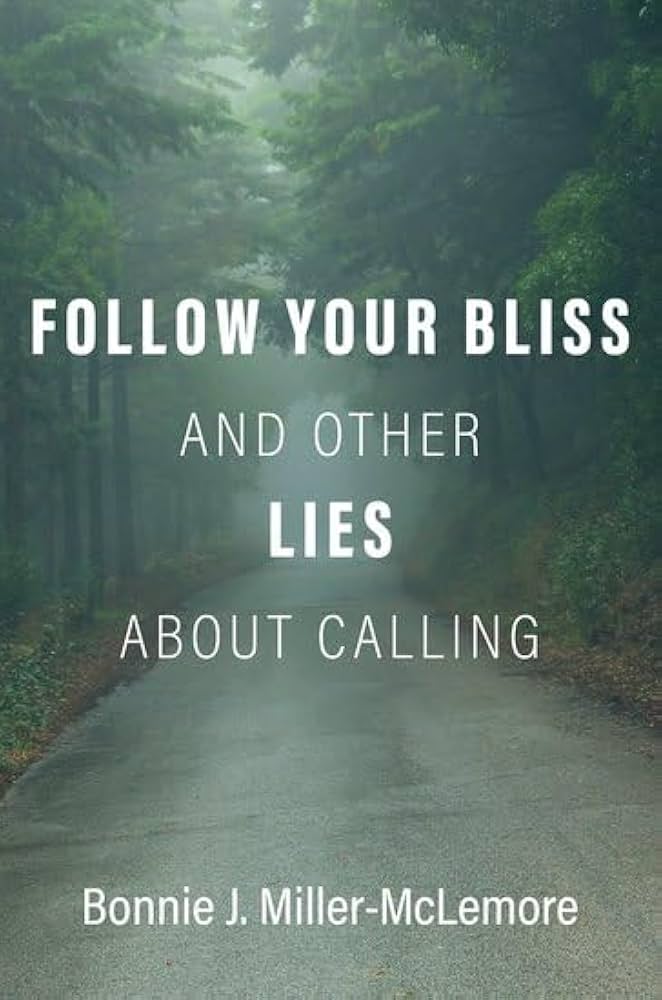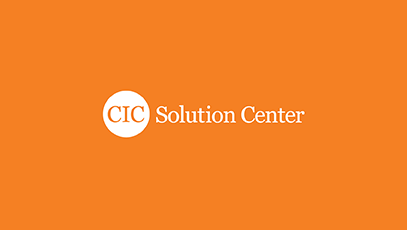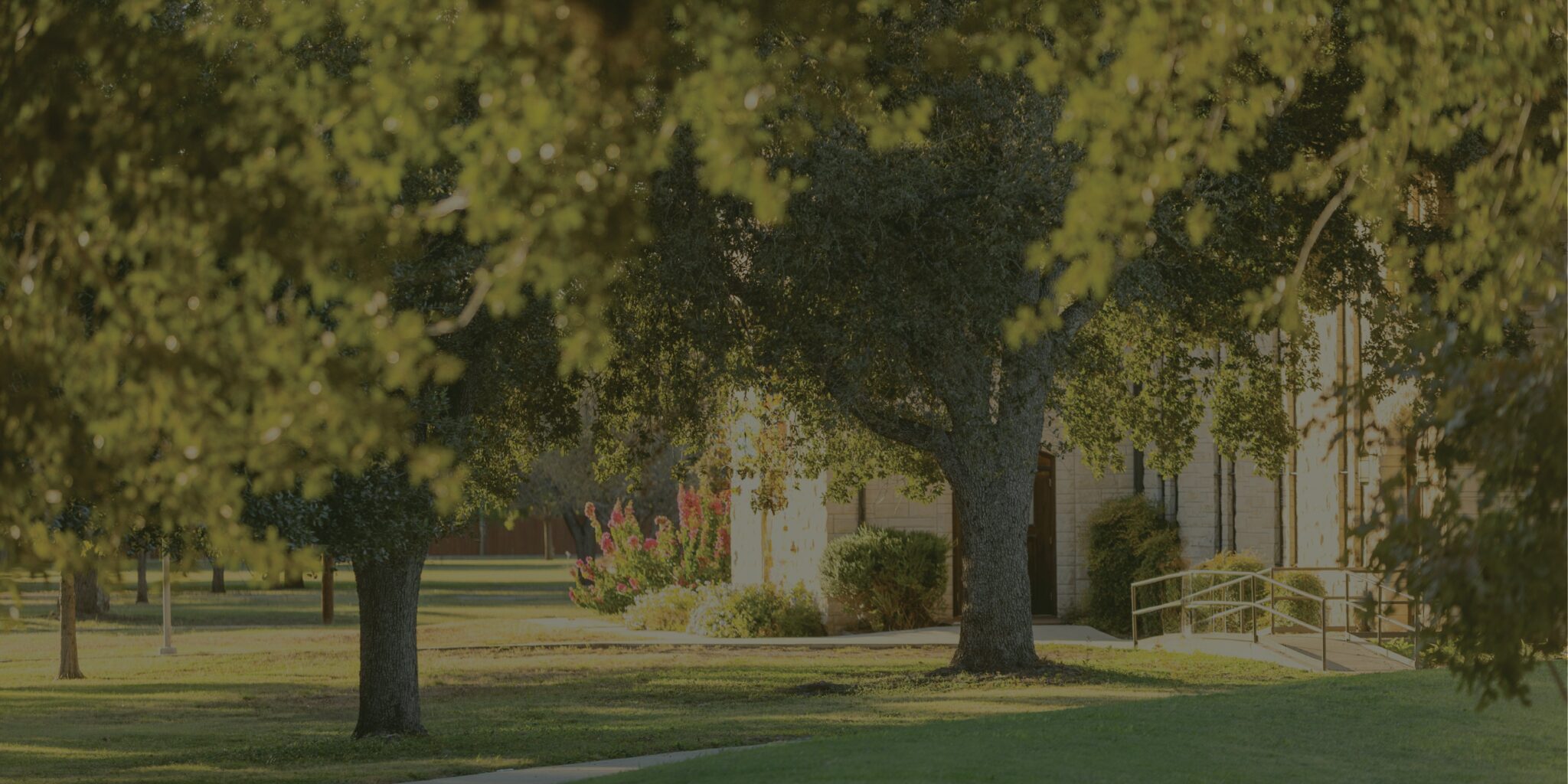Reviewed by Devin Manzullo-Thomas
Assistant Professor of American Religious History, Messiah University

Bonnie Miller-McLemore’s Follow Your Bliss and Other Lies About Calling is a breath of fresh air in our conversations about vocation. That might sound like a strange thing to say about a book whose title, at least at first glance, sounds a bit negative. Lies about calling? Who’s lying about calling? Well, the answer—it turns out—is: many of us.
In this short volume, Miller-McLemore—a practical and pastoral theologian by training—tackles what she calls the “double-edged nature of vocation”: the reality that “callings are good and terribly difficult all at once” (92). Those of us who have been doing this work for some time probably know about the good stuff, such as the feelings of pride and accomplishment that we experience when our students make breakthroughs in vocational discernment.

What we often downplay or even ignore, Miller-McLemore gently reminds us, are the other dimensions of calling—the ones that can be challenging, disheartening, embarrassing, shameful, or painful. In six chapters, she outlines these “dilemmas” or the “undersides” of vocation:
- missed callings, the opportunities we don’t take or must turn from;
- blocked callings, the dreams and ambitions that are thwarted, obstructed, or dashed by forces beyond our control;
- conflicted callings, created by an overabundance of commitments that we accept or seek out, or that just pile up;
- fractured callings, the ruptures and breakdowns that can occur as we navigate among the many things toward which we are pushed and pulled;
- unexpected callings, those we didn’t envision or didn’t want, yet must take on and bear anyway; and
- relinquished callings, when we must give up work and other activities that we’ve loved and cherished.
Miller-McLemore acknowledges that “there are no simple answers” when it comes to the “undersides of callings” (56), and she doesn’t try to reduce her chapters to simplistic checklists of how to navigate them. Instead, she draws on her academic training—as well as examples from friends, colleagues, and famous figures from popular culture (novels, films, and more)—and offers illuminating language for naming, confronting, and living with and through these challenges. For example, in her chapter on conflicted callings, she helps readers reckon with the ways that “metaphors like balancing and juggling [the many obligations and commitments in our lives] oversimplify . . . and divert attention away from larger forces that create . . . the problem of living well amid conflicted callings” (78). She also offers the notion of “ambiguous abundance” to reframe and even redeem conflicted callings, stressing generative opportunity and the possibility that “moral and vocational growth and wisdom” (85) might result from facing these conflicts honestly and forthrightly.

As this example suggests, Miller-McLemore is not pessimistic or cynical about vocation’s double-edge. Rather, she sees such complexity as “a necessary and even good part of calling, something that can enhance life precisely through its hardship, duty, and even suffering and sacrifice, especially if we talk openly about the challenges” (8–9).
How might this book be put to use in the context of our work? Here are a few suggestions.
- Share the book—or at least some of its chapters—with your students. The chapters on missed and blocked callings are probably the most relevant to undergraduates, given that they often occur in young adulthood. Since even advanced students might find it difficult to accept that calling isn’t all sunshine and rainbows, you might consider pairing these chapters with guest speakers who can speak to the issues with additional real-life examples.
- Organize a faculty discussion group around the book. Invite faculty members from different disciplines and at different points in their professional lives to join. There’s plenty here for scholars at varying points in their careers to reflect on.
- Consider partnering with different departments across your campus to invite other employees—curricular and co-curricular administrators, librarians, and staff—to read and discuss the book. Many people will resonate with the book,and reading it with a wide range of campus partners could be a great way to expand the contexts in which vocational discussions happen at your college or university. (And keep in mind that NetVUE member institutions can receive free copies of the book for reading groups; details below.)
These are just a few of the many ways that Miller-McLemore’s honest, refreshing, and insightful book could contribute to the conversations already happening at NetVUE member institutions. I’m excited about the ways that this book might, as its author suggests, help its readers (and those they care about) “cultivate the capacity to bear rather than rush to resolve the ambiguities that naturally accompany our callings” (11).

Follow Your Bliss and Other Lies About Calling is the NetVUE Big Read for this year. To find out more about how to join the Big Read and receive free copies of the book for your institution, visit the Big Read website. Consider tuning in to the upcoming NetVUE webinars designed to generate ideas for using the text on your campus. You may also be interested in the Callings podcast episode that features Bonnie Miller-McLemore, “The Double Edge of Calling,” as well as the episode with Deanna Thompson, “Callings We Don’t Choose.” See also the Vocation Matters blog post, “‘Voxistential’ Crises and Grappling with the Dark Side of Vocation,” by Jason Mahn.

To report a technical problem with the website, or to offer suggestions for navigation and content issues, please contact Alex Stephenson, NetVUE communications coordinator, at astephenson@cic.edu.



